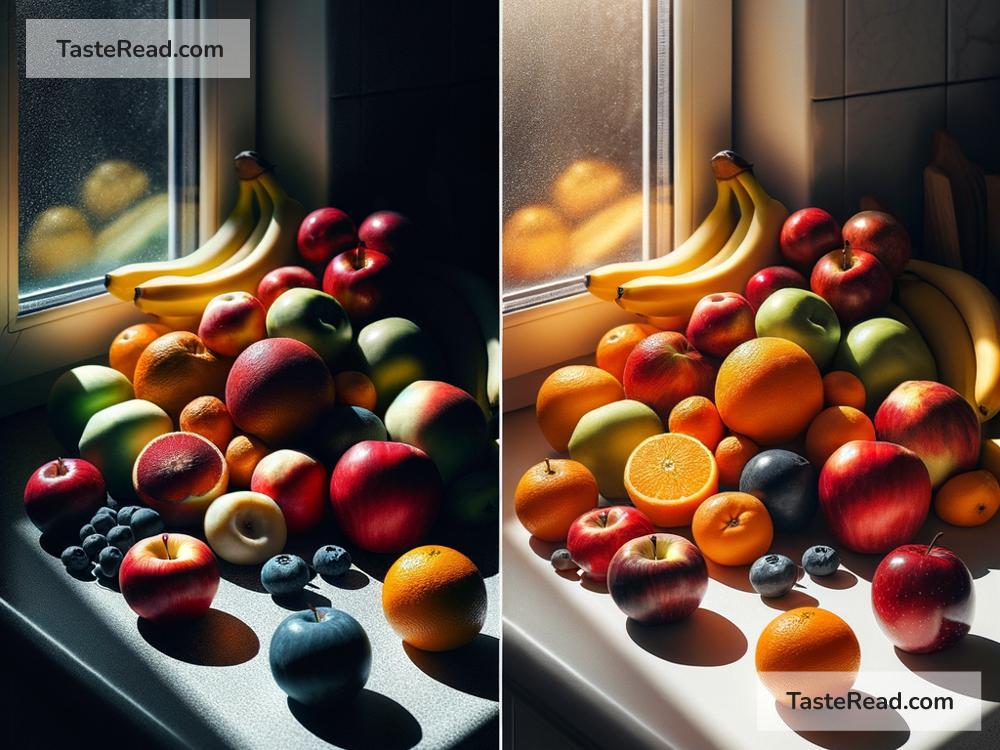The Effect of Light Exposure on Fruit Taste
Have you ever wondered why some fruits taste sweeter, juicier, or fresher than others? While genetic makeup, soil, water, and weather play a big role, sunlight can also have a huge effect on a fruit’s taste. Fruits thrive under the sun—it’s nature’s fuel for their growth and development. Let’s explore how light exposure influences fruit taste in a simple way.
What Does Light Do?
Sunlight is critical for plants, including fruiting plants, because of photosynthesis—the process where plants convert sunlight into energy. During photosynthesis, plants use light, carbon dioxide, and water to create sugars. These sugars are stored within the fruit, which is what makes fruits sweet and flavorful. Without enough light, the process slows down, and the taste of the fruit may suffer.
But it’s not just about sweetness! Light also affects a fruit’s acidity, color, and aroma, all of which contribute to its overall taste and appeal. Think about biting into a ripe mango, a tart lemon, or a soft peach. Each of these fruits has a unique flavor balance shaped by the amount and type of sunlight they receive.
How Light Exposure Impacts Sweetness
The sweetness of a fruit is mainly determined by its sugar content. Fruits like apples, strawberries, and grapes use light to produce sugars during their growth. The more sunlight they get, the more energy they gather, which results in more sugar being stored in the fruit.
Fruits grown in shady conditions or during cloudy seasons may produce less sugar. This is why fruits harvested in summer, when the sun is stronger and days are longer, often taste sweeter compared to fruits grown in winter or under artificial light. This is also why farmers strategically choose locations with optimal sunlight for their orchards and farms.
Interestingly, some fruits, like tomatoes and peppers, continue to ripen after being picked. If they were exposed to good sunlight before harvest, they’ll likely maintain their sweet flavor. But if they ripen in darker conditions, their sweetness may not develop to the fullest.
The Role of Acidity
Sweetness isn’t the only factor in a fruit’s taste; acidity also plays an important role. Acidity gives fruits that tangy, tart, or zesty flavor, and light exposure affects this too. Fruits that don’t get enough sun may have higher acidity levels compared to those that receive regular sunlight.
For example, citrus fruits like lemons and oranges need plenty of sunlight to balance their sweetness and acidity. If they don’t get enough light, they may taste more sour or bitter. On the other hand, adequate sunlight helps them develop a brighter, fuller flavor.
Color and Aroma
Light exposure can also influence a fruit’s color and smell, which indirectly affects how we perceive taste. Have you noticed how strawberries grown in sunny conditions are deep red, while those grown in shade may look pale? That’s because sunlight activates pigments in fruits, such as anthocyanins or carotenoids, that give them vibrant colors. A ripe, colorful fruit is often more appealing to eat than a dull, lifeless one.
In terms of aroma, light helps fruits develop their unique smells by boosting certain chemical compounds. For instance, the smell of ripe peaches or berries is a result of specific volatile compounds that are produced during their growth in sunlight. These aromas enhance the overall eating experience because smell and taste are closely linked.
Overexposure to Light
While sunlight is crucial for fruit development, too much light can also be harmful. Excessive sun exposure can cause fruits to become overly ripe or even sunburned. Sunburnt fruits may have tough, dry skin and taste less sweet or juicy.
Farmers have ways to protect their crops from overexposure to sunlight. For example, some farmers use shade nets or design orchards with taller trees to shield delicate fruits from harsh midday sun. This ensures the fruit stays healthy and maintains its natural flavor.
Artificial Light and Controlled Environments
Did you know that some fruits are grown indoors or in greenhouses using artificial light? Farmers use special lamps that mimic sunlight to grow fruits in controlled environments. While this method ensures that fruits receive just the right amount of light, it doesn’t always result in the same flavor as naturally-sunlit fruits. Sunlight affects fruits in complex ways that artificial light can’t fully replicate.
That said, controlled environments are helpful for growing fruits year-round, especially in areas where sunlight is limited during certain seasons. Farmers can adjust the light intensity and timing to get the best results, making sure fruits are still tasty even without direct sunlight.
How You Can Taste the Difference
The next time you eat fruit, ask yourself how it tastes. Is it sweet, sour, juicy, or bland? Fruits that have had plenty of sun exposure often taste better because they’ve developed the right balance of sugars, acids, and aroma compounds.
If you grow your own fruits at home, make sure they get enough sunlight by placing them in a sunny spot. For store-bought fruits, choose fruits grown in regions known for sunny climates—they’re often bursting with flavor!
Conclusion
Light exposure plays a key role in shaping the taste of fruits, from their sweetness and acidity to their aroma and color. Without sunlight, fruits wouldn’t develop the rich flavors we love. So next time you enjoy a bite of fruit, thank the sun for its delicious contribution. It’s truly amazing how something as simple as light can make fruits taste so good!


